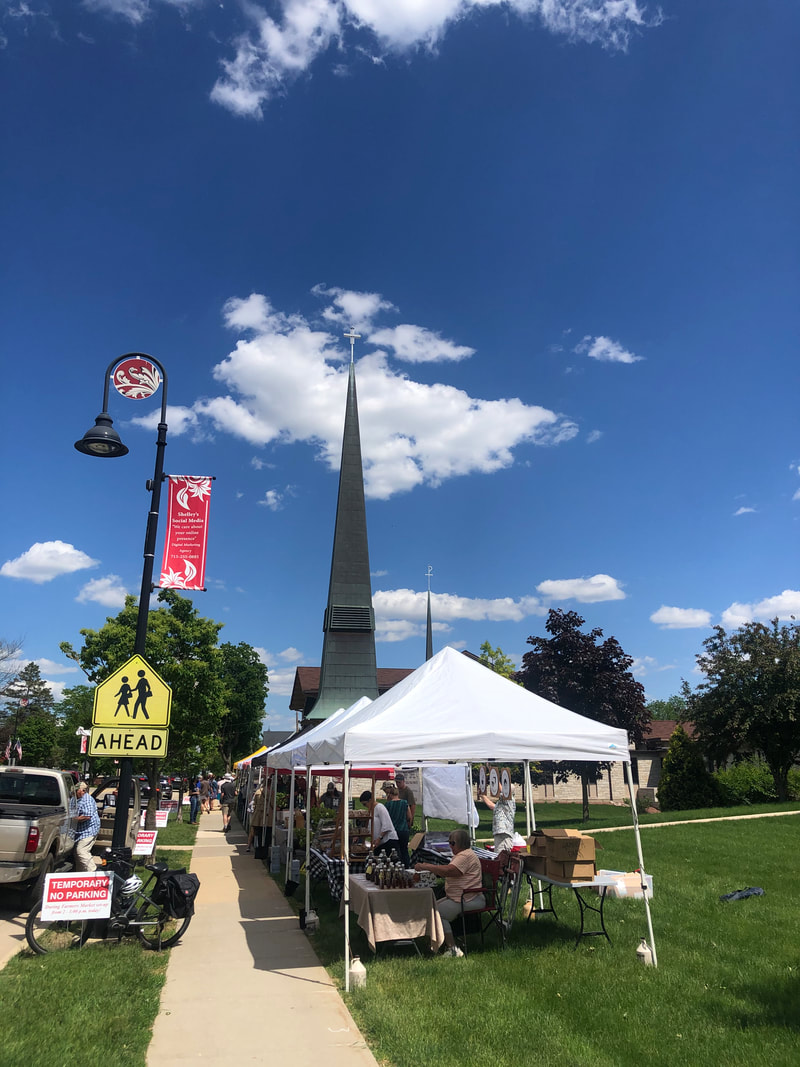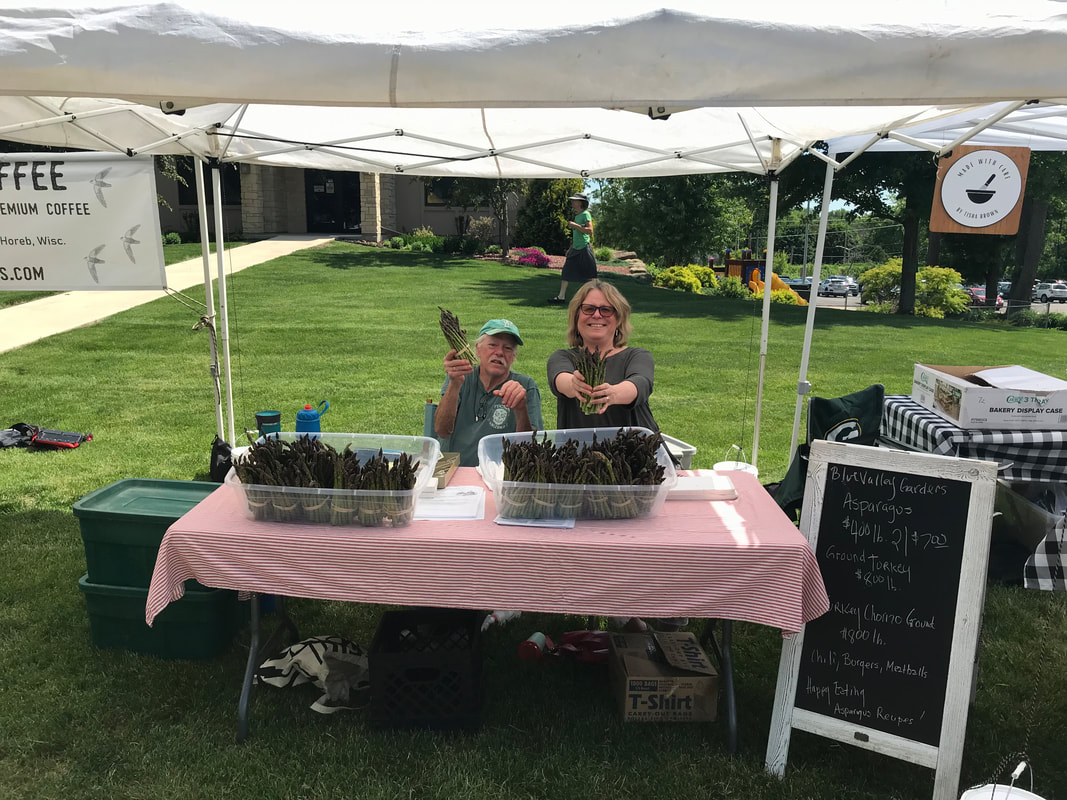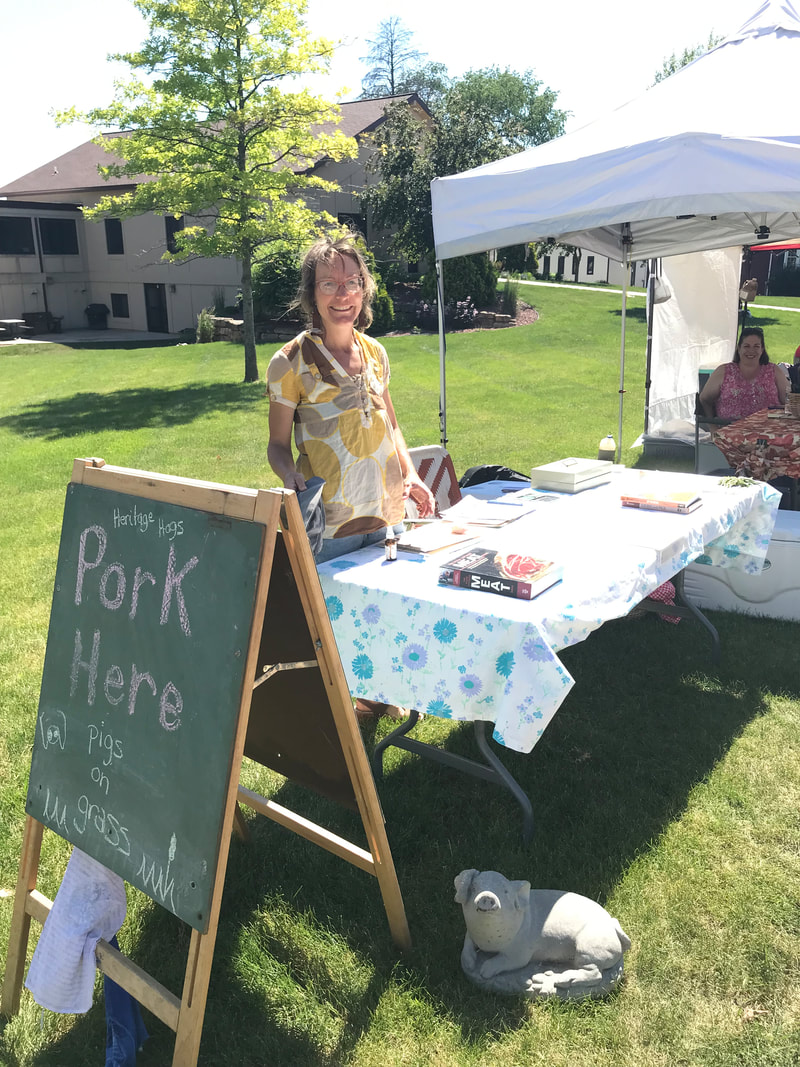Good Morning, Mount Horeb!
In lieu of a featured vendor for you this week, I asked our vendors to recommend something in season that they’re especially excited about for me to highlight. Sarah of Squashington Farm said, “Garlic scapes! You can use them like you would regular garlic, especially good in cooking and salad dressings, or try drenching them in oil and either roasting or grilling them!”
In lieu of a featured vendor for you this week, I asked our vendors to recommend something in season that they’re especially excited about for me to highlight. Sarah of Squashington Farm said, “Garlic scapes! You can use them like you would regular garlic, especially good in cooking and salad dressings, or try drenching them in oil and either roasting or grilling them!”
Photos from BonAppetite.com (left) and KatieSping.com (right)
I mentioned this to my mom, Lorna, who told me about being at one of the Madison markets recently when a fellow shopper was asking what these strange curly green stalks are, and not only the vendor but the several shoppers at her booth were falling all over themselves to sing the praises of garlic scapes.
Easier to use than bulb garlic! Great flavor! You can freeze them to use all winter! And, get this – they are low-FODMAP so people who are sensitive to/can’t eat garlic can use them to add that missing garlic flavor back into their favorite dishes.
But what the heck are they?? Well, they are the stalks that grow from the bulbs of garlic plants, and they are removed in the spring/early summer so that the plant will channel all its energy into its growing bulb. This means that garlic scapes are a kind of edible ephemeral; they’re there until they’re gone, so if you see ‘em, buy ‘em.
Easier to use than bulb garlic! Great flavor! You can freeze them to use all winter! And, get this – they are low-FODMAP so people who are sensitive to/can’t eat garlic can use them to add that missing garlic flavor back into their favorite dishes.
But what the heck are they?? Well, they are the stalks that grow from the bulbs of garlic plants, and they are removed in the spring/early summer so that the plant will channel all its energy into its growing bulb. This means that garlic scapes are a kind of edible ephemeral; they’re there until they’re gone, so if you see ‘em, buy ‘em.
A quick google search will yield dozens of ideas and recipes for cooking with garlic scapes, so I’m not going to reinvent the wheel here, but will just list a few of the easiest and most interesting ideas I’ve come across, and hope to pique your interest:
Lorna was reflecting on how she’s been cooking with garlic scapes for probably fifteen years but she remembers when she, like that shopper she saw at the market last week, was confronted by this strange plant for the first time, too. What is it, what do you do with it, and that question that most of us probably don’t ask as often as we could: where does it come from?
“When you only shop at the grocery store, everything is in season all the time,” Lorna said, adding that it was through going to farmers markets and talking to farmers that she cultivated an awareness of what was in season and when and from where – and especially an appreciation for those short-lived treasures like garlic scapes that strut their hour on the stage and then retreat to the wings until next year.
So, today’s lesson? (Besides ‘garlic scapes are great’?) Talk to your farmers! I’ve asked every single vendor at our little market, “What do you love about what you do?” and to a one they’ve replied with their own variation on, “We love making connections with the people who eat our food.”
- Garlic scapes lightly sauteed and then added to a green salad or pasta salad (this is what we were eating when my mom and I started talking about garlic scapes and seasonality)
- Scape pesto
- Scape hummus
- Scapes added to soups, stir-fries, and sautees; or any dish where you’re throwing in all the extra veggies in your fridge from your CSA or farmers market haul
Lorna was reflecting on how she’s been cooking with garlic scapes for probably fifteen years but she remembers when she, like that shopper she saw at the market last week, was confronted by this strange plant for the first time, too. What is it, what do you do with it, and that question that most of us probably don’t ask as often as we could: where does it come from?
“When you only shop at the grocery store, everything is in season all the time,” Lorna said, adding that it was through going to farmers markets and talking to farmers that she cultivated an awareness of what was in season and when and from where – and especially an appreciation for those short-lived treasures like garlic scapes that strut their hour on the stage and then retreat to the wings until next year.
So, today’s lesson? (Besides ‘garlic scapes are great’?) Talk to your farmers! I’ve asked every single vendor at our little market, “What do you love about what you do?” and to a one they’ve replied with their own variation on, “We love making connections with the people who eat our food.”
In their own words, from our veggie growers:
“We love coming to Mount Horeb market in particular because of the strong sense of community. We have seen the same faces for 8 years now!!! It's incredible. We have watched babies grow into full fledged children and children become young adults. We love forging those long-term relationships with our customers and trying our best to be a reliable source of nutrition all year long.” -Squashington Farm, Sarah and Pat
“We love connecting people with good food. We love swapping recipes with market shoppers and introducing folks to new vegetables. […] And we love dreaming up and building sustainable, local, caring food systems with our communities.” -Jumping Spider Farm, Sam and Katie
“We're really grateful to be in the fresh market farming business. We love getting to know our customers and their families, realizing that we're growing food for our friends and neighbors is super cool and we're really fortunate to be in this business and to have such tremendous support from the community.” -Bures Berry Patch, Kathy and Ed
“The people.” -Blue Valley Gardens, Matthew and Susan
“We love Mt Horeb Market's tight-knit community […] and the other vendors' food!” -Kingfisher Farm, Eva and Caleb
“We love talking to market visitors about the nutritional benefits of microgreens and sharing different ways to use them. We love that the market brings the community together and supports local businesses and farmers.” -Mighty Leaf Microgreens, Joey and Kristen
“I make a difference in the world with the work I do. I love to interact with people that eat our local food. I think this is part of being a local eater: knowing your farmer. The market provides a great place for these important relationships.” -Dorothy’s Range, April. (Pigs are not veggies, but she had such a good answer I snuck her in here anyway, writer’s prerogative.)
Also of note this week:
The local group Soil Sisters will be featured on the PBS show Around the Farm Table this week, fittingly at 7 PM on our market day, and April Prusia of Dorothy's Range (above) is one of the highlighted farmers.
More info here on Facebook and here on PBS, hope you tune in!
More info here on Facebook and here on PBS, hope you tune in!











 RSS Feed
RSS Feed
